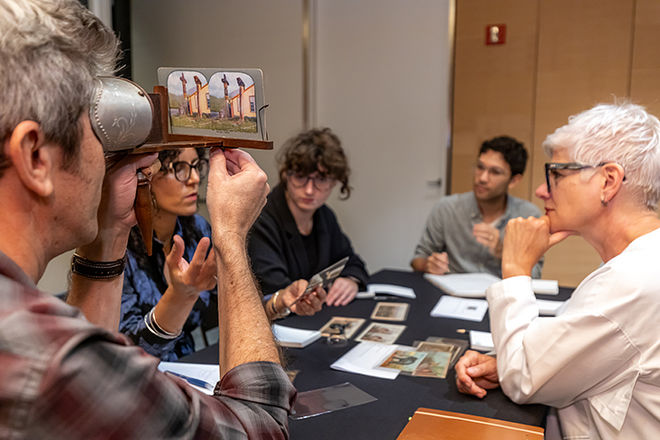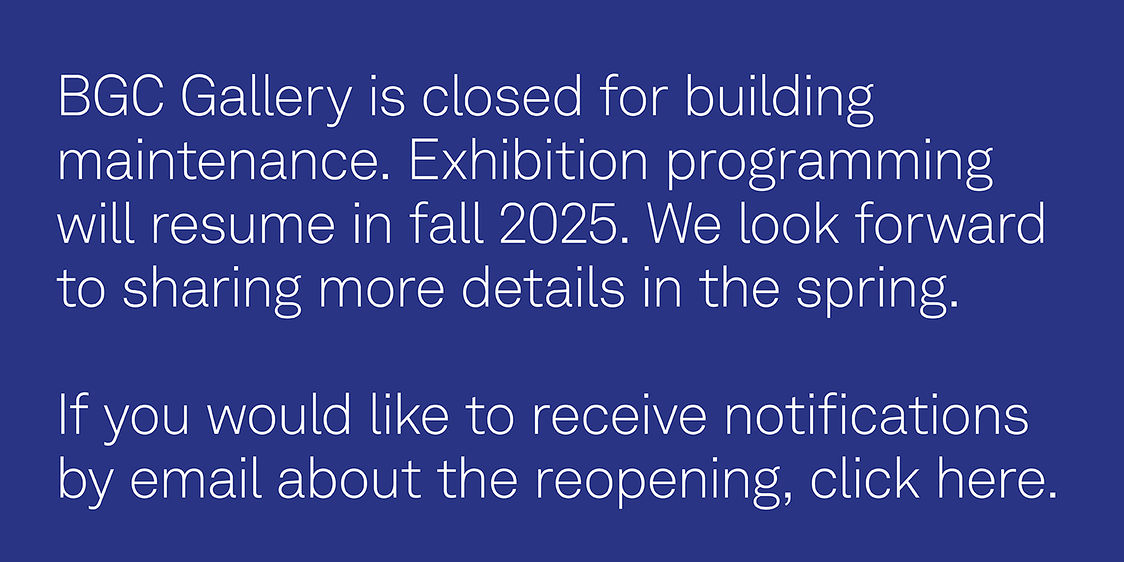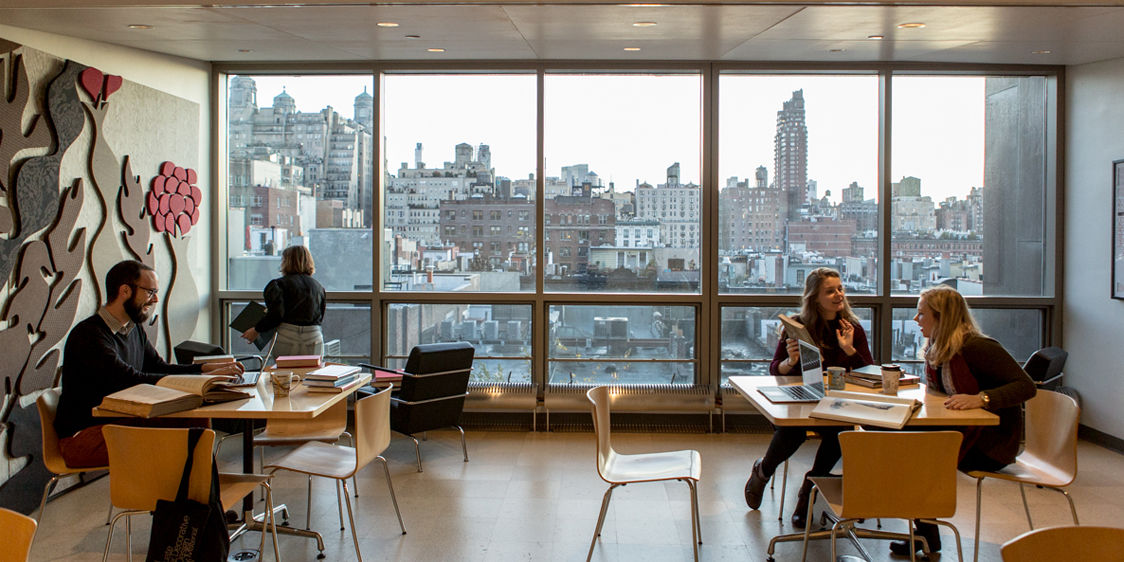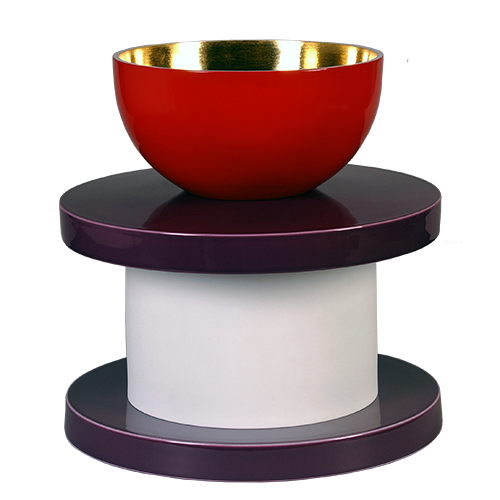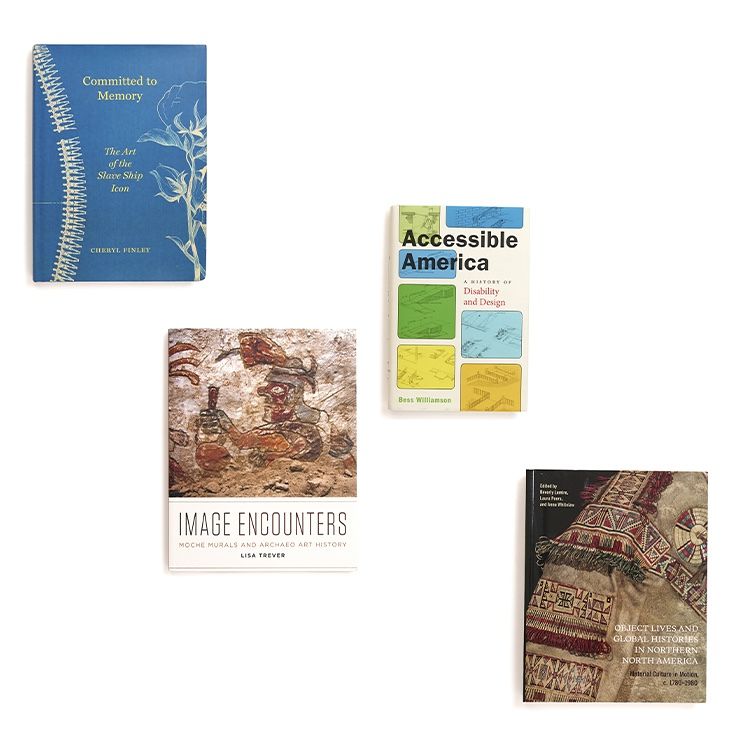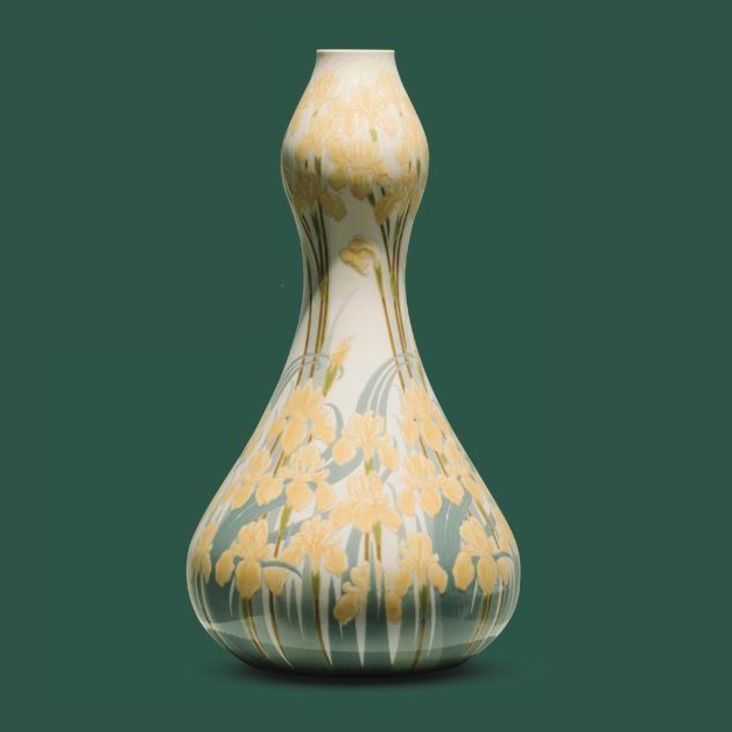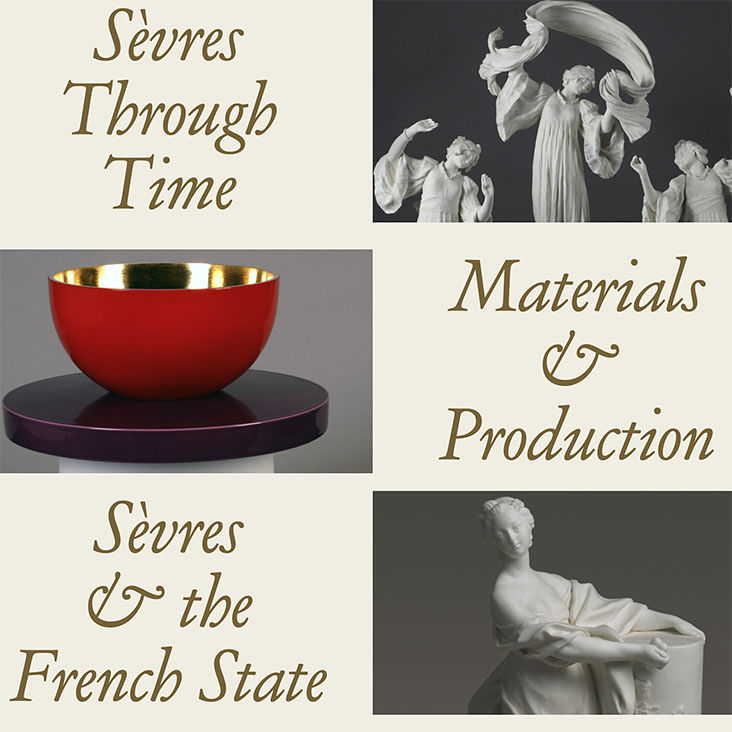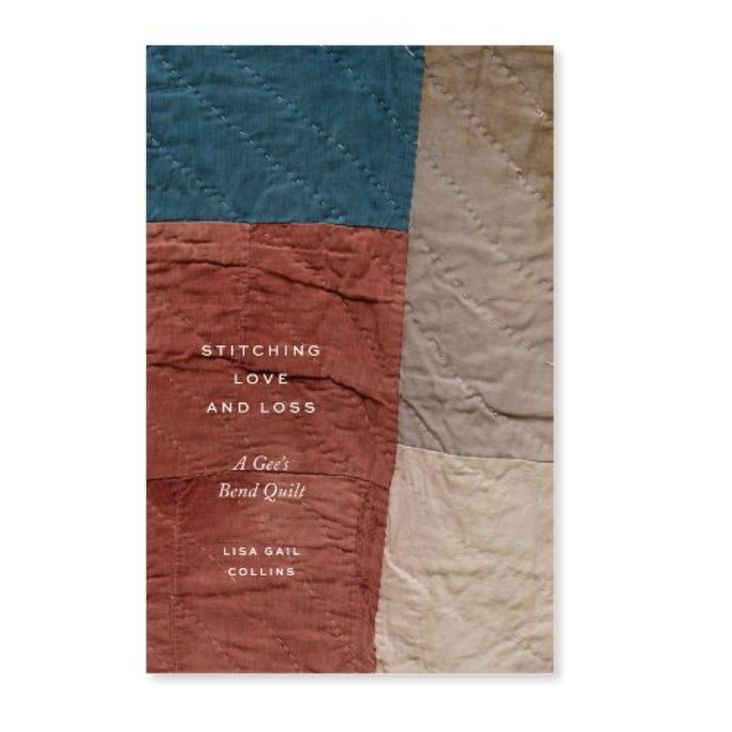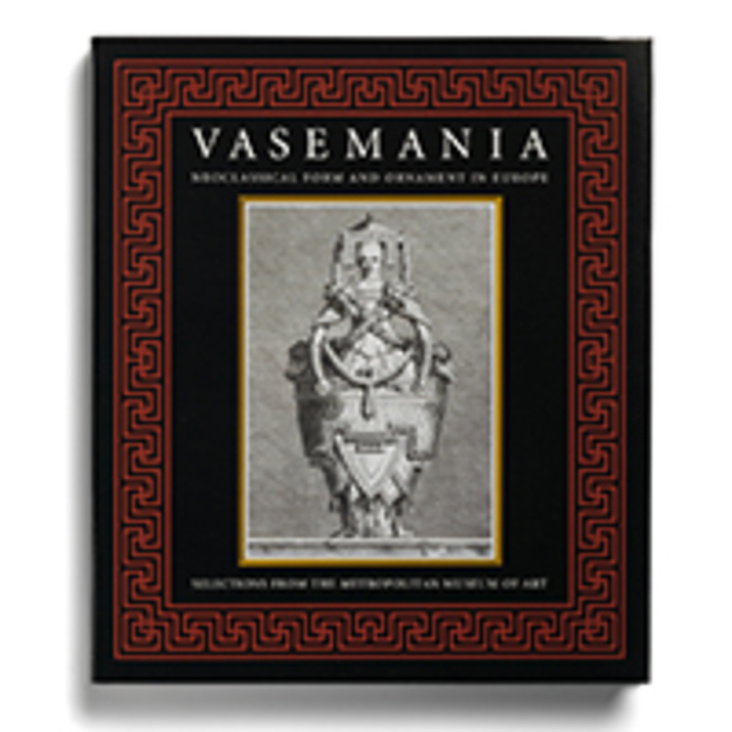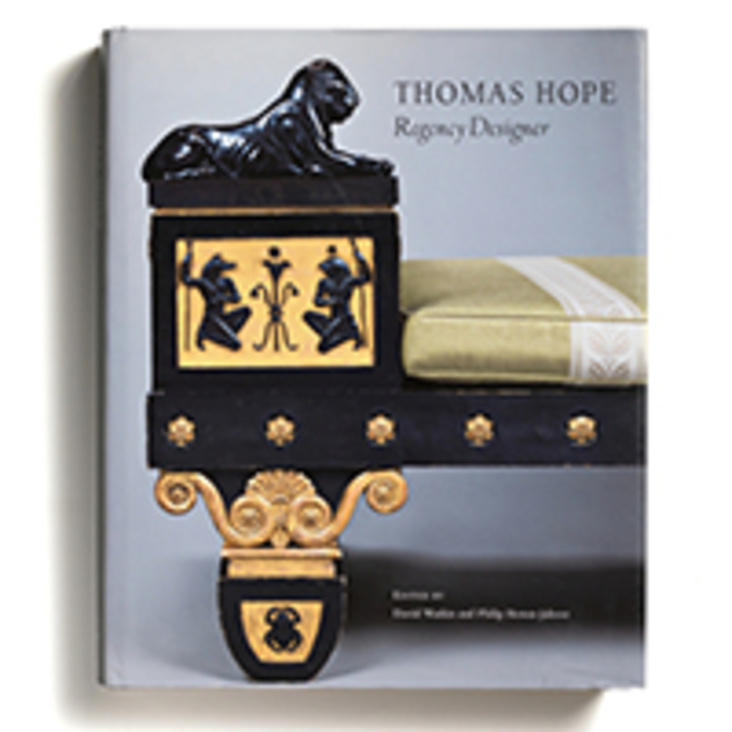Originally published in William Kent: Designing Georgian Britain, edited by Susan Weber. New Haven and London: Published for Bard Graduate Center: Decorative Arts, Design History, Material Culture, New York by Yale University Press, 2013. 89-109.
In
July 1709 the twenty-four-year-old William Kent set sail with two companions,
the
connoisseur-antiquary John Talman
and the architect Daniel Lock, for Italy. It was the pivotal event of his life, and he was to remain there
for
almost ten years, accumulating a store of knowledge
and making sketches
and
observations that
would
reverberate in his later work. The
experience influenced everything that followed in his career — Italy was
the making of him. Kent’s years there
form a significant chapter not only in his life, but also in the history of England’s
cultural relationship with Italy.
Since the fifteenth
century, Italy had played a unique role within European
culture. On the one hand it was politically fragmented
and for most of this period was dominated
by Spain, while on the other, it was the principal engine of the visual arts in Europe
and the capital and heartland of the universal Catholic church. Italy’s political
weakness was balanced by its cultural
preeminence. Indeed, the amazing
fecundity of Italian culture was probably enhanced by its political fragmentation, which sustained numerous
capitals as centers of patronage
and
encouraged the development of regional schools. A large part of European art history between about 1450 and 1800 is about the relationship
between Italian culture and other European
cultures.
Since the Reformation, however, England’s relations with Italy, as with the rest of Catholic
Europe, had been severely hamstrung by the politics of religion. In the reign of Elizabeth I, the English,
distrustful of Catholicism and absolutism
and regarded in Italy as heretics,
seemed condemned to receive Italian culture at second or third hand. Nevertheless, Italy retained
a tremendous allure. In 1613-14 the twenty-first Earl and Countess of Arundel made a long and culturally pioneering tour of the Continent with the young Inigo Jones in their suite, returning with remarkable collections of paintings and ancient sculpture. For Charles I and his court circle,
religious politics
could not be allowed to prevent the development
of a new and rich visual culture,
together with great collections of
art. This court culture was not well received among wide swathes of English public opinion: it was destroyed and discredited during the English Civil War, and the royal collections were sold.
After the Restoration
of the monarchy
in 1660, the arts began to recover from the puritan
philistinism of the Commonwealth
period. Collections of paintings
began to be
formed, assisted by the repeal
of restrictions on the import of works of
art in 1695. One limiting
factor was the nation’s inability to develop native artists able to compete with foreign talent outside
the field of architecture: late seventeenth-century England was dominated artistically by Flemish, Dutch,
and German immigrants.
After the Commonwealth and, even more, after the Glorious Revolution
of 1688, it was inconceivable (or very unlikely) that any English
ruler and court would be able to replicate the kind of court culture, much less religious culture, which was the normal matrix and setting for the patronage of the fine arts in Italy. Any
new cultural relationship between England and
Italy, therefore,
would have to be forged by laymen, and by private enterprise, so to speak.
The Civil War and Commonwealth and the exile of many of the king’s supporters had led to a rise in the number
of English tourists to Italy in the 1640s. In the later seventeenth century, a steady stream of English visitors reached the peninsula, and the expression “Grand Tour” was coined by the Catholic travel-writer
Richard Lassels. Gentlemen and noblemen, such as Sir Thomas Isham, the second Earl of Sunderland, and the fifth Earl of Exeter, went and returned with collections
of contemporary Italian paintings.
In London an art market was developing. There, as in contemporary Amsterdam with its rich artistic culture, art was
widely seen as a commodity. In Italy traditionally a rather different
view had prevailed.
Most major works of
art were the result of direct
patronage, whether
from a court, aristocratic, civic, or ecclesiastical milieu. As the seventeenth century progressed, however, an Italian art market emerged in several cities. By 1674 there were at least a hundred art dealers
in Rome, but many felt
that this was demeaning to
the artists and to art itself. The Accademia
di San Luca, the artists’ guild in Rome, expressed the prejudice eloquently: “It is serious, lamentable and indeed intolerable
to everybody to see works destined for the decoration
of Sacred Temples or the splendour
of noble palaces exhibited in the
streets like cheap goods for sale.”
In the mid- to late seventeenth
century, Italy’s economy was in decline, and Rome in particular experienced
severe problems: food shortages
were
common. In these circumstances, the papal government
and
court’s ability to go on commissioning works of art and architecture on the grandest scale was remarkable. Economic realities, however, were catching up with the elevated view of art expressed by the Accademia, and aristocratic patrons
were increasingly
in debt. One consequence
was that
Italian artists, craftsmen, and performers left Italy to seek employment abroad.
Another was the rising
purchasing power of foreign,
especially English, visitors to Italy. After about 1700, the terms of trade in the Italian artistic
world
were gradually shifted
by this irruption of
English money.
To say that the English were purely tourist-consumers buying art for their own pleasure would be an over-simplification. Grand Tourists came for a wide range of motives,
and the main ones were educational: the tour came to be
seen as the completion
of a gentleman’s education. Interest in the arts was
probably a secondary motive, and collecting art somewhere behind
that. Nor were the English coming to receive what Italy had to offer in any uncritical way. Protestant England
was developing a very different set of cultural and political values, which in many ways were defined
by their opposition to those of Catholic Europe.
An important figure in their development was the Whig philosopher-aristocrat Anthony Ashley Cooper, third Earl of Shaftesbury, who had been taught by libertarian philosopher John Locke.
In Shaftesbury’s benevolent and optimistic philosophy, mankind
was blessed with an innate moral sense allied
to an innate aesthetic sense. For him, the appreciation of beauty was a moral quality, and the possession of taste a legitimate object
of education, as he argued in his highly influential philosophical
work Characteristicks (1711, republished in 1714). In 1711 Shaftesbury moved to Naples for the sake of his health. There, he
commissioned the painter Paolo de Matteis
to paint a huge allegorical canvas, The Judgment of Hercules, representing the classical hero’s choice between Virtue and Vice. The earl wrote detailed
instructions for his artist, and developed these into a tract,
also titled The Judgment of
Hercules, about moral content and meaning
in art. Around the
same time, he wrote his Letter Concerning the Art or Science
of Design, which focused on architecture, in
which he made an intemperate attack on the architecture of Wren and his school and called (in very general terms) for a revival of art and architecture in Britain. The Letter was a factor in the decline of the baroque
style that had been current in Britain for a generation.
Shaftesbury, like most of his class, had received a classical education grounded in Greek and Latin literature
and Roman history. For many of the English ruling class, their classical education
gave
them important lessons for the present, the Roman Republic
providing exemplars for personal conduct, sound government, and the defense of liberty. The Whig party, which had engineered
both
the Glorious Revolution of 1688 and the Hanoverian Succession of
1714, interpreted these events in terms of Roman republican resistance to
tyranny, but their Tory opponents also used ancient literature and history as political
allegory. This alignment
between ancient history and contemporary culture became one of the most
important themes underlying the Augustan culture of eighteenth-century England. It was doubtless a factor in so many English people traveling to Italy, though it had absolutely
nothing to do with contemporary Italian culture.
Finally, a few English travelers were coming to Italy in search of the means of an artistic
revival for their country. In the early 1700s the
architect William Talman and his son John set out to develop a collection of works of art on paper, a Museum Talmanicum, to inspire and educate English taste, and in 1709 John Talman prepared
to embark for Italy, to assemble as many drawings,
prints, and other
models as possible in the pursuit of this noble objective. He was almost certainly the decisive figure
in Kent’s going with him: it was a
characteristically generous
deed. July 1709 found Kent and Talman on board the Swallow in the English Channel, waiting for a favorable
wind to send them on their way to Italy.
To Rome
Traveling abroad in 1709 was a dangerous
business, as England was at war with France. Talman
and
Kent had a long and tedious journey, battling
contrary winds and threatened with capture by
the French
before the Swallow eventually put into Livorno (known to the English as Leghorn), the main port of the Grand Duchy of Tuscany, arriving on
October 15. By October 20 they were in Pisa, and by November 18, in Florence. The capital of Tuscany was still a wealthy and cultivated place, and though it had been a long time since Florence had been a leading artistic center, the city had some of the finest collections
in Italy. An important contact
for the travelers was the British Consul, Sir Henry Newton. Talman busied himself in several ways. He made his own drawings of buildings and of art, engaged five artists to draw buildings
and antiquities for him and to copy works of art (with disappointing results), and he tried to find a British buyer for the great collection of drawings
assembled by Roman connoisseur Padre Sebastiano Resta.
We know less of Kent’s activities, though Newton seems to have commissioned
a painting (now lost) from him, and Kent made the acquaintance of the patrician connoisseur Francesco Maria Niccolò Gabburri, who commissioned drawings from him and later included a brief notice of Kent in his Vite di Pittori. Vincenzo Foggini, the court sculptor, was
probably the first distinguished Italian artist to meet
Kent.
In April 1710 Talman and Kent went to Rome. Talman wrote to his father that he had walked there to save money, and given that Kent had no means
of his own, it seems certain that he walked as well. Grand Duke Cosimo’s first secretary, the Abbot Carlo Gondi, had provided a letter
of introduction to the Tuscan envoy in Rome, Count Anton Maria Fede. Count Fede introduced Kent and Talman into papal court circles
and to the distinguished painter and connoisseur Benedetto Luti,
who lived in Fede’s palace.
There is something
eloquent of this age in the contrast between
the
two Englishmen
walking the 145-mile
(233.3 km) journey to Rome, and finding an immediate reception
in high court and artistic circles.
They lodged separately, Kent staying in the Strada Paolina
with the antiquary and dealer Luca Corsi. Another
English painter and art dealer, Thomas Edwards,
was also staying there.
Although a substantial city, Rome was only
a fraction of
its
former size as the ancient
imperial capital. The
built-up area, concentrated in the bend of the Tiber, occupied less
than half the space contained
by
the ancient Aurelian wall. It would have presented astonishing contrasts between the grand streets and public spaces, the great Renaissance and baroque
buildings, the huge palaces of the Roman aristocracy, the narrow medieval alleys lined with old houses, and the ancient monuments on all sides, merged haphazardly into
later buildings or crumbling in neglect. As the capital of the Papal States, Rome had long benefited from the revenues of a substantial territory and the patronage of the hierarchy of the universal church. The city was ringed with the suburban
gardens and villas of the aristocracy, many of them outstanding works of architecture.
The palaces and villas often housed stellar collections of antiquities, paintings, and other works of art. By Kent’s arrival in 1710, however,
the city’s artistic life
was on a downward trajectory. The economic decline had taken its toll. The great artistic projects
of the seventeenth century were long past, and the masters of the
mid-century such as Bernini and Cortona were dead. It
seems unlikely that Kent would have been aware of this, and in any case Rome remained artistically the richest city in Europe. For anyone with an ounce of visual sensibility, it was (and is) an endless series of revelations. Some time during
1710, Kent entered the studio
of one of Rome’s leading
artists, Giuseppe Chiari, as a pupil. He was probably attending drawing classes at
the Accademia di San Luca, as well, this being necessary in order to enter their annual
competition, the Concorso Clementino, in which he won a prize in
1713, discussed below.
By 1710 a steady flow of English tourists was arriving in Rome: anecdotal
evidence suggests that there
may
have been up to twenty in the city at any one time.
In April 1710 a wealthy Yorkshire baronet,
Sir William Wentworth of Bretton, arrived in the city. Before long he met Kent and agreed to sponsor his studies,
paying him £40 a year for seven years, and by April 17 Kent was sending a picture and drawings for Sir William, “my very good patron,” to London. In July
1710 Talman wrote to Newton in Florence, discussing how they might find more support for Kent and making excuses for his not having sent Newton
a letter of thanks.
In December Talman traveled to Naples on his own. His letters to Kent offer further proof
of how good a friend Talman was. “Dear Billy” [Billy!], he wrote on November 8,
“I hope ye don’t take it ill that I have not writt … I hope you study hard; by Xmas I hope to be in Rome. … Pray you or Mr Lock write often.”
By December 6, Talman had had no word, and his next letter opened
with the somewhat frostier “Mr Kent, I wrote to you November 8 but have had no answer. I am sorry you forget your friend.”
Talman had been instrumental in getting
Kent to Rome. They remained
on friendly terms, but Kent had already found a richer patron
and
was to find others. Toward the end
of 1711, another two English gentlemen arrived in Rome, traveling together: Burrell Massingberd,
squire of South Ormsby in Lincolnshire, and Sir John Chester, baronet, of Chicheley in Buckinghamshire. Massingberd seems to have made contact with Kent first, and he and Chester joined forces to subsidize Kent’s studies with an additional £20 a year each, doubling
his sponsorship. Massingberd returned to England in 1712, and he and Kent corresponded:
five copies of his letters to Kent and twenty-seven letters that Kent wrote to him from Italy survive, and this is our main source of evidence for Kent’s Italian years.
Kent himself wrote that in Rome “you may live for fifty pound & by [buy] books & prints
as our friend Mr. Lock dos,” so his £80 a year, from Massingberd,
Chester, and Wentworth, assuming it was paid promptly,
would seem like an ample income. In return, Massingberd
and
Chester wanted Kent to act as their artistic agent in various ways, buying
paintings and drawings, copying paintings
for them, and sending a number of works of his own invention.
Kent also purchased and sent luxury items such as soap, “Naples tar,” and “treakle.” The letters trace these purchases and commissions and show Kent
periodically sending packages via the trading firm of Samuel and Thomas Winder or their associate Humphrey Chetham, both based in Livorno.
It seems reasonable to assume that Kent also wrote
to Wentworth and provided similar services
for him.
Either Talman or Chiari seems to have opened doors in Rome for Kent, for at some point he gained access to the circle of Cardinal
Pietro Ottoboni, whose great-uncle had been elected Pope Alexander VIII in 1689, making Ottoboni his vice-chancellor, effective
head of the papal government. Alexander VIII died in 1691, but Ottoboni’s court at the Palazzo della Cancelleria remained
at the center of Roman cultural life for almost half a century. The painter Francesco Trevisani, architect Filippo Juvarra, and composers
Corelli and Handel,
all resided in the Cancelleria at some point, and its state rooms, hung with the cardinal’s extensive collection and adorned with sculptural furniture by Juvarra, would have been among the most splendid in Rome. Many in the cardinal’s circle were members of an academic society, the Accademia degli Arcadi. The Arcadians
reacted against the high baroque
style of the mid-seventeenth century, in favor of a more refined classicism in art and architecture. Maratti and Chiari were among their preferred artists, so Kent, in Chiari’s studio, was aligning
himself with fashionable
Roman opinion.
Another English artist,
Henry Trench (actually Anglo-Irish), worked in Chiari’s studio and
had been studying painting in Italy since 1704. The little evidence we
have
suggests that he and Kent were acquaintances, and perhaps
rivals rather than friends. Trench was probably a better painter than Kent, winning prizes
in the Concorso Clementino on three occasions to Kent’s one. In 1712 he won an important commission from Lord Shaftesbury, who was preparing his Characteristicks for publication. Shaftesbury asked an English priest resident
in
Rome, Joseph Fagan, recommend and artist. It seems to have come down to a
choice between Trench and
Kent, for on April 5, 1712, Shaftesbury wrote to his publisher:
My young painter who is coming to me from Rome is not Mr
Kent, as I thought, but one Mr Trense, who came much earlier and has been many years longer there and made earlier
application to my acquaintance.
But I shall have occasion to prove also Mr Kent’s genius, and if I should find him the better
subject to improve under me, shall
prefer him nevertheless.
Trench took up residence in Shaftesbury’s palace, drew the elaborate
headpieces for Characteristicks to his
patron’s direction, and bought
works of art on his behalf. In September 1712 he returned to Rome, his work done, and delivered
“a pair of Silk Stockins” to Kent, which had apparently been sent in return for a drawing of King Attila which Kent had given to Shaftesbury. Silk stockings, an expensive requisite
for any appearance in polite society, were doubtless a useful
thing to have, but whatever Shaftesbury thought of Kent’s artistic abilities, this was to be his only recompense from that quarter. Lord Shaftesbury’s health never recovered, and he died in Naples on February
15, 1713. Kent eventually had more success with
richer patrons, but Trench
never found another of
Shaftesbury’s wealth and eminence, and in their
respective careers, that may have been a decisive
factor.
Traveling
Italy boasted several other important artistic
centers outside Rome. Kent had already visited Florence in 1709, and in 1714 he
embarked on a six-month tour of northern Italy with Thomas Coke of Holkham, the
richest of the English travelers then in Rome. Coke, sixteen at the time
and heir to a large estate, had been sent by his guardians on a prolonged Grand
Tour and arrived in Rome around March 24, already having emerged as a collector
on a grand scale.
On May 16 Kent wrote to
Massingberd: “here is one Mr Coke a bying a collection & has bespoke of six
of the best painters a picture — & one I am to do as beg as ye life.”
Kent acted as an agent buying art for Coke whose Grand Tour accounts include
various payments to Kent for works of art and several more “as a present.”
Kent and Coke set out from
Rome on June 6. Kent kept a journal of his travels, entitled “Remarks by way of
Painting & Archit.,” which records their movements and Kent’s reactions to
what he saw. By June 8, they were in Siena, where Kent noted the “most
remarkable thing here … ye Cathedral, a Gothic Stile,” but he most admired
the Seicento paintings by Beccafumi, Maratti, and others. On June 10 they
were in Florence, where Kent saw the ducal collections in the Uffizi and the
Pitti palaces, and several other collections. He also visited the Medici villa
at Pratolino and recorded his admiration for its garden and grottos.
On
July 3 they arrived in Bologna. This wealthy papal city had been the home of a
classicizing school of painters from the late sixteenth century. In a packed
twelve days Kent visited the cathedral, eight other churches and convents, and
eleven private collections, hectically noting down the highlights — again
mainly painters of the classicizing schools. However, he was also noticing
schemes of painted decoration and enthused about Signor Boschi’s celebrated
collection of drawings. Leaving Bologna on July 15, they traveled up the
Via Flaminia, by way of Emola and Faenza. At Forli, Kent particularly admired
“ye famous Coupole of Cingiani” (Carlo Cignani’s dome in the cathedral).
Ferrara hardly registered with him, but at Ravenna he admired the Byzantine church
of San Vitale, commenting on its relationship to Hagia Sophia, and the mausolea
of Galla Placidia and Theoderic.
The
most important goal in northern Italy was Venice, then still a great power in
the eastern Mediterranean and a large commercial center. Kent and Coke stayed
there from July 22 until August 18. In his journal Kent passed over
contemporary Venetian artists in favor of the glories of the Cinquecento,
especially the work of Titian, Tintoretto, and Veronese. In Palladio’s convent
of San Giorgio Maggiore, Kent was fascinated by Veronese’s huge Marriage
at Cana and recorded the iconography of its decorative schemes,
lapsing into Italian in his excitement. Even though San Marco was “very much
gotic,” he could enthuse about its famous bronze horses. In the library on the
Piazza San Marco, he greatly admired the interior decoration (though
misattributing the building to Scamozzi).
From
Venice, Kent traveled via a couple of fine villas to Padua, where he noted (but
did not comment on) the famous murals by Giotto. At this point, Kent was
evidently accompanied by Henry Trench, for they both signed the celebrated
Visitors’ Book at the University of Padua on September 1,1714, with a Latin
tag, possibly by Kent. They may have been traveling apart from Coke, who did
not sign the book until October 3. After leaving Padua in early September,
Kent spent a single day at Vicenza where he admired “a famous Ampiteater of
Palladio (the Teatro Olimpico) & several other palaces.” The next day
they arrived at Verona, where he saw the ancient amphitheatre but did not
mention the magnificent High Renaissance archi- tecture of Scamozzi and
Sanmicheli. It was a different matter, though, when Kent arrived in Mantua on
September 4. There he was overwhelmed by the works of Giulio Romano, and the
Palazzo Te elicited a stronger reaction than anything else in his journal.
Staying in Parma from September 7 to October 3, Kent witnessed the magnificent
ceremony for the betrothal of Elizabeth Farnese, daughter of the reigning duke,
to Philip V of Spain. He and Coke spent a few days in Modena, returning
south via Bologna and Florence, and by November 23, Kent was back in Rome.
At
this point, Kent most likely met the man who was to have the greatest influence
on his career and life, Richard Boyle, third Earl of Burlington. This wealthy
young nobleman had arrived in Rome on September 30, 1714, after an exhausting
overland journey, had fallen ill, and scarcely emerged from his room until
December. In December and January, Lord Burlington made visits, was
received in society, and purchased works of art. In February 1715 he departed
for home. During this short period, Kent must have met Burlington and impressed
him, though we have no direct evidence and no contemporary accounts of their
first meeting, which had such momentous consequences for Kent and Burlington’s
careers and for English art. In any event, they seem to have remained in
contact, for in 1719 Kent joined Burlington, then on his second Grand Tour, in
Genoa and returned home to England with him after a stay in Paris.
Another
English traveler, Sir Andrew Fountaine of Narford in Norfolk arrived in Rome on
his second Grand Tour in late 1715 or early 1716. Fountaine was a highly
respected scholar and connoisseur with privileged access in Italy, collecting
on a grand scale. Kent helped him buy drawings, and Fountaine doubtless paid
him and also gave him a gold cameo ring as a gift.
Kent
made two further trips in 1716. In April and May he traveled to meet Thomas
Coke in Naples. Coke very generously paid all his expenses. The city, by
far the largest in Italy, had long benefited from the patronage of the
Neapolitan aristocracy and a succession of Spanish viceroys and had developed
its own rich tradition of baroque painting. Kent met his its leading
painter, Francesco Solimena, and admired his work, writing that he “has put
some better ideas into my head in respect to coulering.” From September to
December 1716, Kent and Coke traveled again to northern Italy. This trip had
different objectives: they stayed longest in Florence, from September 15 to
October 17. They spent a week each in Bologna and Modena and over a month
in Parma, where Kent made studies from Correggio’s mural in the cathedral’s
dome. There he fell ill, possibly from malaria, and returned slowly south,
arriving in Rome on January 8, 1717. Kent continued to act as Coke’s agent
for purchases of art, and in 1717-18 the amounts rose sharply, with £200 paid
to him for a varied list of objects, and further sums of £1,260. Kent does
not seem to have traveled much beyond Rome again until his departure for home
in 1719.
Paintings and Works on Paper
Rome had the richest
and most sustained tradition of painting of any city in Italy or Europe. The dominant strand, beginning in the early sixteenth century, was Raphael’s serene, classicizing style,
inspired by ancient painting
and sculpture. This style had been carried forward in every generation. In the early seventeenth century, however, the Roman school broadened,
with
new approaches
to life drawing,
composition, color, lighting, and mood, developed by Caravaggio and others. A division was opening between “classical” painters, led in the early seventeenth century by Carracci, and baroque artists typified by Caravaggio. This duality endured through most of the seventeenth century. By mid-century the classicizing tradition was led by Andrea Sacchi, and the baroque tradition was represented by
Pietro da Cortona, the former
emphasizing disegno, and the latter, colore.
By 1700 the leading
painter in Rome was the aging Carlo Maratti and his
chief
pupil, Kent’s master, Giuseppe Chiari.
Maratti had achieved a synthesis between the classical
and
late baroque styles, and for several generations his style was accepted as an ideal.
Kent’s journal entries express
his appreciation for the different strands of Italian painting: the Venetians Titian, Veronese, and Tintoretto, and explicitly baroque artists such as Cortona, Luca Giordano, and Solimena. In Chiari’s studio, though, Kent would have been trained
in Maratti’s tradition as approved by
Ottoboni and his circle.
It has been characterized since as having “a rather bland sweetness, restrained by the rule of academic
classicism … and
tending towards a certain cool anonymity.”
Academic it certainly was.
Chiari would have required his pupils to copy ancient sculptures and paintings of the
great masters. In his letters, Kent mentions
copying several works, most of which were intended for Massingberd
and Chester. He copied three works each by Guido Reni, Maratti, and Veronese, two by Domenichino and Correggio, a pair of landscapes by Cortona, and one each by Annibale
Carracci,
Guercino, Michelangelo,
Poussin, and
Raphael. Most of these works are now lost, but one has recently been
identified, still in the collection of Burrell Massingberd’s descendants in Lincolnshire.
This is Kent’s copy of Diana and Actaeon, a
landscape by Dughet with figures by Maratti. The original was then in the collection
of the Marchese Niccolò
Maria Pallavicini (d. 1714) in the Palazzo Rospigliosi-Pallavicini in Rome. Kent produced a competent copy, altering the work’s
proportions from
portrait to landscape. Another of his copies, of the central
group of Veronese’s Marriage at Cana, remained in
the Massingberd collection at South Ormsby until its sale in
the 1960s and has since disappeared. There are probably unrecognized
copies by Kent in
other English collections.
On November 24,
1714, Kent
wrote to Massingberd, informing him that he planned to copy Guercino’s celebrated
fresco of Aurora at the Casino Ludovisi for him
and that “my master will have me do things of my invention
& I have begun out of Homer when Agmemnon sent to Achelles for Briseses a subject yt never has been done & I hope will do very well.” It is the first evidence of a specific original work by Kent, other than an un-named canvas “as big as ye life”
that Coke had commissioned from him that spring;
it is uncertain
whether either work was ever finished. Thereafter, Kent’s letters record several more original
works. In 1715 there was
“a Galatea of my invention” which he painted twice, one each for Chester
and Massingberd,
a painting of the Holy Family, and another with a Homeric subject,
Venus conducting
Helen to Paris. Kent remarked of the latter: “its true they [original works] take a great deale of time but is more to my study then copying twenty but must do both.”
In 1716 Kent received a signal honor: a commission
from Ottoboni for a painting,
Cyrus, King of Persia, Instructing the Jews to Rebuild the Temple in Jerusalem. The work was completed, displayed at the feast of St. Roch, and hung in Ottoboni’s residence, the Palazzo della Cancelleria.
Kent followed this triumph with further original works in
1717-18. There were two mythological canvases with life-size figures for the Duke of Queensberry and Lord Leominster — Venus with Aeneas and Achates and Hercules and Iole. Neither canvas survives, but
an engraving of
the latter by Agostino Ratti shows it to have been closely based on a scene in Carracci’s celebrated ceiling in the gallery of the Palazzo Farnese. For Kent’s chief patrons, there were decorative
panels for their houses: Music and Poetry for Massingberd,
and Herse and Her
Sisters Sacrificing to Mercury for Chester.
It is difficult to judge Kent’s development
as a painter in Italy, for other than copies only two major paintings
from these years survive and are known.
The first, Herse and Her Sisters is in the entrance hall
at Chicheley Hall. The second is
a fresco on the ceiling of San Giuliano dei Fiamminghi, the church of the Flemish community in Rome,
a glorification of the titular
saint, Julian the Hospitaller. It is not clear
how Kent secured this prestigious commission, though it seems to have been paid for by William Dugood, an émigré. Scots jeweler who was serving the
Jacobite court in exile while secretly
a double-agent for the British government. In April 1715 Kent wrote, “I have lately been learning to paint in
fresco for my master is a painting of a cieling of a church.” This was
Chiari’s Glory of St. Clement, commissioned by Pope Clement XI for S.
Clemente. At the back of his Italian Journal, Kent made lengthy notes on
the technical aspects of fresco painting. Documents in the archive of San
Giuliano show that Kent completed this fresco between September and December of
1717, working closely with the plasterer.
Several works on paper survive
from Kent’s years in Italy, spanning the range of graphic art, from casual
sketches to highly finished
drawings to engravings. Kent’s journal incorporates several sketches after works of art that Kent evidently dashed off on the spot, such as one of Circe with Ulysses and His
Companions, a drawing by Parmigianino, in the
Uffizi. A sketch with
wash by Kent of Aeneas and Andromache, recently found by Cinzia Sicca in the Biblioteca Apostolica, may represent a thought
for a “painting of invention.”
Kent doubtless made drawings for his own future reference.
One of these may be the drawing in the British Museum attributed to him, an elaborate composition, probably the design for the end of a painted coved ceiling,
framing a panel showing Cato about
to commit suicide.
Other drawings were
doubtless made for patrons.
Kent copied Domenichino’s Death of Cleopatra and Lot and His Daughters for Coke, who had
purchased the original
painting of the latter. The painting and drawing are both lost and are only known from an engraving after Kent’s drawing,
which bears Coke’s coat of arms and a dedication by “N.N.” who remains unidentified.
One of Kent’s finest surviving drawings is a highly finished red-chalk copy of Maratti’s
painting Cleopatra Dissolving
a Pearl in Wine, a fine example of a copy made as a desirable object in
itself.
Drawings could be important works in their own right, and Kent’s first major achievement in Rome was to win second prize in the second tier of the Accademia di San Luca’s annual competition, the Concorso Clementino, in 1713 with “a drawing of my invention
about 20 figures.”
This was The Miracle of
San Andrea Avellino, an
elaborate and notably baroque composition
resembling a design for an altarpiece.
Kent told Massingberd
that he “wone ye preice,” and his patron replied
to “congratulate you upon ye Pope’s medal wch. I think is ye second you have won. … The French
news paper said it was a German yt wone it but I showed my letter to Mr Gale & he gott it altered in our English news.” Kent had indeed entered the competition in a previous year but had not been placed, and he had elided over his
1713 “preice” actually only being second place. Massingberd
was as good as his word, and Kent’s success was reported in the English newspapers.
In January
1716 Kent wrote to Massingberd
enclosing a print
he had engraved himself, and a number
of prints by him survive, evidence of his mastery of this important type of graphic art. An engraving of Venus and Triton after Maratti, and an etching of Polyphemus watching Galatea after Annibale Carracci, both of about 1715,
represent tributes to two of the painters
he admired most.
Works on paper formed a large part of most artists’ output then, and served a wide range of purposes. In Italy the
study of drawings was already an important branch of connoisseurship,
demonstrated by the widespread
interest of Italian and English collectors when Padre Resta’s important collection
was sold in 1709–10. For Talman, the assembly of a great “paper museum” of drawings
was his primary purpose in going to Italy, and other English collectors, such as
Talman’s friend Richard Topham,
also concentrated on drawings. Kent purchased drawings for his English patrons and advised Sir Andrew Fountaine on his collection.
It is easy today, in focusing
on paintings, to forget how
important drawings were within the visual culture of the eighteenth
century. They were a significant part of
Kent’s life and work, and for his Italian years, the works on paper are a major part of the evidence.
Architecture and Interior Design
Kent went to Italy to study as a painter, and for the first five
years or so after his return
to England, 1719-24, he worked as a painter
but
also as an illustrator and in other fields as
well. Italy, however, pervades Kent’s later work as architect, decorator, and designer. Since he never made a return trip, the sources for this development
of his work must have been stored up in that first and only sojourn, the ten years he spent there. However, the documentary sources for the Italian years only make occasional reference to architecture in comparison with the abundant references
to painting.
Rudolf Wittkower proposed a view that
the
Anglo-Palladian revival in England, led by Lord Burlington,
was
based on a narrow range of sources, above all from Palladio, Scamozzi, and Inigo Jones. Kent’s architectural work was
viewed as subsidiary to the Burlingtonian tradition, rather than seen in its own right. Cinzia
Sicca, in
1986,
argued that this
undervalued Kent’s architecture and decoration, which has a distinctive character based on different sources from the Roman High Renaissance and mannerism.
Kent’s correspondence and other sources show him visiting
major sixteenth-century buildings around Rome: Humphrey Chetham recorded a visit with him to the Villa Aldobrandini
at Frascati in March
1712 and another to the Villa Borghese the following month. The journal recording his northern tour of June to September
1714 is headed “Remarks by Way of Painting
& Archit.,” and as the journey
wore on, the references to buildings and decoration became more frequent. Strikingly few of these are to ancient architecture, while Byzantine
and medieval buildings, such as the Duomo
at Siena or San Marco in Venice merit rather
laconic references (“very much gotic but ye great arches are Round& all of mossacke”). The most detailed
consideration was given to the grand decorative
schemes at San Giorgio Maggiore and the library on Piazza San Marco. Kent spent just a
single day in Vicenza, the locus
classicus of Palladio’s work.
Kent’s imagination was much more fired by the extraordinary interiors
of the Palazzo Te, the mannerist
pleasure-dome built for the Marquess Federico II Gonzaga by his court artist
and
architect Giulio Romano in about 1524-10. Giulio had been Raphael’s principal pupil and assistant,
and Kent would have known Raphael’s decorative schemes in the Vatican on which
Giulio had worked and their joint
masterpiece, the Villa Madama in Rome.
In his journal,
he feverishly set down his recollections
of
the Palazzo Te’s interiors: “the next Roome ye Giants a fighting with ye gods ye finest
of all Julio Romanos works
Giove & Juno in one part
taken ye Thunder, betwean Ganimede — ye next Cibele & [illegible] four Seasons with mercuri imbraceing baccus — by these Apollos chariot
pan a going with a woman
next neptuna, & then the fiuries,” and he returned to the subject again a few
days later. At Parma he sketched the temporary decoration in
the Duomo for the betrothal of
Elizabeth Farnese to the king
of Spain. Here and in his description
of the ducal collection and gallery, he again reveals his interest in interior decoration.
After the tour, Kent wrote to Massingberd that “I made skectches of some peice in every place I came.” In November 1718 he wrote that “I am a makeing all preperations & continualy a
drawing ornements & archetecture … things yt I think will be neciseary for me in England.”
These sketchbooks have been lost, but it is clear from Kent’s later architectural
work that he had developed a vision of a powerful astylar architecture from the work of Romano, Vignola,
Peruzzi, and others,
less academic than Burlington’s architecture and not as dependent on the use of the orders. His use of arcading to articulate a façade in the Royal Mews designs, or of all-over rustication to
give a sense of
solidity and mass, as in the Old Treasury and the first Holkham
design, testify to his having
learned his own lessons independently.
Kent’s Italian correspondence has hints that
he
was already thinking
about interior design. In one letter he envisioned
Sir John Chester’s staircase ceiling redesigned as a setting for Kent’s
new
painting of Herse and Her Sisters Sacrificing to Mercury, and in another
he
enclosed a design for a chimneypiece for
Massingberd’s wife. Talman was also thinking about interior design, writing that he hoped “to give a lively idea of the Italian gusto in the beautiful manner of ornamenting the insides of buildings.” Talman’s remarkable interior
designs, integrating
mural decoration, ceiling decoration,
paintings, and sculptural furniture, prefigure some of what Kent was eventually to do, though in a different, more baroque style. Talman was
the link between Kent and the sculptor Foggini, who was also a notable designer
of furniture and silverware for the court and very likely an important influence for Kent’s future work in this
area.
Although Talman may have been influential, Kent was
his own man, and his instincts inclined
him to earlier models and a wide range of
media and motifs. The High Renaissance
potential for creating
different levels of “fiction” within an interior
seems to have excited him greatly. At the Palazzo Te, Romano deployed a range of fictive architecture and sculpture in his interiors. In the Hall of Giants, the painted architecture seems to be collapsing
around the viewer. Kent was thrilled by
the
almost hallucinatory quality
of these interiors,
which so powerfully evoke the feeling
that you have stepped into a different, pagan world: “returning to ye Palace d’Te ye other
part several thoughts as killing Lyons fishing figurs
of Emperours ye top Phaeton Chariot — ye next several little figures as ye centaurs
a fighting — in the last Julio Romano’s loves
of Psiche & mars & venus with little Cupids.”
In the Villa Madama in Rome, Kent
would
have seen how Giulio
and Raphael deployed fictive
painted reliefs and cameos within
“real” sculpted stucco-work.
Other artists had developed other types of painted “fiction.” On the ceiling of the Palazzo Farnese’s gallery, Annibale Carracci gave a tremendous demonstration of quadro riportato, the motif of framed paintings of mythological scenes being presented
within a painted composition, surrounded by fictive
bronze medallions and sculpture.
Kent also saw how some palace interiors in Rome were conceived as settings for paintings, the walls hung with rich velvets and damasks and contrasted with white and gold stucco-work, while other surfaces were treated
as “sculpted walls” — whether literally sculpted and shaped in three dimensions or metaphorically “modeled” with decorative painting. He was learning about motifs and framing elements, too, writing in
1718, “I now am make a study of ornements yt will be proper to adorne about my paintings if can introduce this Italian gusto into England.” In the 1720s he deployed the whole range of these ideas at Kensington Palace in a suite of rooms the like of which had not been seen in England
before: it was a
far richer language of interior design
than the bolection paneling and white plasterwork of the previous generation.
The Ancient World
For English
visitors to Italy, much of its attraction was
the history and art of the ancient Roman world. Where Kent’s years in Italy are concerned, as with his architecture,
there is very little direct documentary evidence relating to this theme, and what he learned there has, in large part, to be
read back from his later work.
Official culture in Rome attached great importance to ancient art. Its preservation and the
development of the Vatican’s collections had been significant objectives for papal governments since the sixteenth
century. In the early eighteenth century, the papal government’s antiquario, or official
in charge of antiquities, was the artist Francesco Bartoli, celebrated for his paintings of ancient works of art. Talman and Kent both knew Bartoli well. Talman tried
but failed to persuade his father to buy a series of colored drawings
of recently discovered paintings in the Baths
of Constantine from Bartoli, and Coke later commissioned copies of ancient paintings and sculptures from him.
Bartoli’s beautiful and faithful
copies continued
a well-established tradition. Roman artists had been drawing
inspiration from ancient painting ever since the vaults of Nero’s Golden House had been discovered in the late fifteenth century and mistaken for caves, hence the name grotte and the label grotteschi, or “grotesque,” applied to the remarkable decoration found
there. Raphael, Romano, and others produced grotesque schemes of extraordinary sophistication, notably in the Vatican Palace and Villa Madama. Kent would have known both the ancient and the High Renaissance examples, but it seems to have been Talman who first suggested that Kent paint in the “Grotesk” style in February 1717. Kent must have had access to excellent copies, perhaps including
works by Bartoli, when he reintroduced the style to England in the ceiling of the Presence Chamber in Kensington Palace.
More than
any
other objects, marble sculptures
stood for the ancient world and its artistic achievement.
Since the Renaissance, the
most
famous ancient sculptures,
housed in the Vatican and a handful of aristocratic collections, had achieved European
fame, and a whole artistic subculture was
devoted to producing copies, casts, and drawings of them. In the 1630s the Roman collector Cassiano dal Pozzo began the formation
of his celebrated
“Paper Museum,” commissioning vast numbers
of drawings to record the physical
evidence of Roman
history and art. Casts and drawings of ancient sculpture were common elements of a Grand Tour collection
and some English collectors, such as Talman and Topham, planned paper museums of their
own.
Kent produced several drawings of ancient sculptures
for Topham’s collection,
ten of which survive. They exhibit Kent’s
faults in draftsmanship; the effort to produce a faithful
image tended to squeeze the spontaneity out of his drawing,
leaving the awkwardness seen in much of his figurative painting. They nevertheless represent a significant strand of his work in Italy and an important theme in Grand Tour culture. On a more practical level, these drawings and others like them furnished Kent with valuable material on his return to England. Two drawings of cuirassed torsos by him in the Topham collection, for example, may have provided models for this motif in the Privy Chamber
at Kensington Palace, while fictive statues appear in several of Kent’s painted interiors.
Painted statues were all very well, but what the English
collectors most wanted
were
authentic sculptures to take home, and this was more problematic. The most celebrated
figures were in major collections. New discoveries were rare, and excavations were controlled by license, with the papal government
entitled to one-third of the proceeds. The government forbade the export of important works without permission.
Massingberd expressed an urgent desire
to Kent for “a little tast of Statues or Busts,” and Kent managed to acquire a copy of a head of Homer for him but was obliged to explain
that the celebrated figure of Meleager which Massingberd hankered after would not cost 300 scudi but 3,000, which of course was far beyond his means. Such figures as were available for purchase were often notoriously heavily restored. Coke, who was much richer than Massingberd, spent six years in Italy and amassed a magnificent collection
of marbles,
the finest to reach England since the Arundel Collection a century earlier. His attempt to export a
statue of Diana illegally with Kent’s assistance in April
1717, however, put him in danger of being arrested — and Kent of being banished
from Rome.
For the English
travelers in Italy, one of the greatest attractions was seeing
the sites associated with the ancient history that
represented such an important part of their schooling. It is
difficult to know how far Kent would have
shared or understood this. His education at Bridlington Grammar School
may have included some Latin, and the sale
catalogue of his library lists a few works in Latin alongside numerous
titles in Italian. There is also a Latin tag alongside his signature
in the University
of Padua Visitors Book, but this could be by either Kent or Trench.
There is hardly a reference to ancient history or literature
in his correspondence, but Kent evidently understood ancient
mythology and iconography very well and at some point had a summary of Ovid’s Metamorphoses
compiled for him in Italian.
Kent’s temples at Chiswick
and Stowe were among
the first exact attempts to re-create ancient buildings
in Western Europe. Rather than being a direct legacy of
his years in Italy, they were probably based more on the published
plates of Vitruvius and Palladio than on Kent’s
own drawings or recollections. His patrons,
with their classical education and outlook, most likely provided the “narratives” of these “political” gardens, while Kent provided the art. Whatever their intellectual origins, these re-creations of ancient architecture
are among Kent’s claims to fame.
Coming Home
Kent enjoyed living in Italy and seems to have been reluctant
to return home. His years there
seem to have suffused his personality as well as his work, as the nicknames “Kentino” and “the Signor” suggest. He left Rome in the summer of
1719 and traveled north
via
Florence and Genoa, where he met Lord Burlington, who was heading for the Veneto. Kent traveled through France, waiting
for Burlington in Paris, and returning to England and Burlington House with him in December.
It is not clear how Kent and Burlington formed such a bond. It is not even certain
whether they met during Lord Burlington’s six-week visit to Rome in the winter of
1714-15 or at another time. However it happened,
Kent had found an ideal patron who provided an ideal milieu.
Burlington House had become one of the leading
cultural centers in England over the previous decade,
and Kent joined a household in which the Venetian painters Sebastiano and Marco Ricci, sculptor Guelfi, poets John Gay and Alexander Pope, and composer Handel had all been in
residence at various times.
Over the years Kent succeeded
in making himself a one-man vehicle for Italian visual culture, adapting it for English tastes. This success related to his own personality and his creative talent, but also came about because he was riding a wave. He found a receptive clientele in England, many of whom had
been to Italy, understood this kind of thing, and wanted it, which brings us back to England’s relationship with Italy and the phenomenon of
the Grand Tour taken by the British
and Irish elite.
The culture
of collecting,
Kent’s own activities in Italy, and the kinds of things that he went on to create represent
a commodification of Roman and Italian art to suit the taste of wealthy English
consumer-collectors. Art that had been created for very different clients
with very different agendas and viewpoints was acquired by or adapted for a classically educated but Protestant ruling class, in part to underpin their self-image as the new Romans. The worship of prestigious or celebrated
works of art and the inflated financial values that have been attached to them ever since, far removed from the actual
cost of creating them, can arguably be traced back to the culture
of the Grand Tour.
It is unnecessary, however, to end on this drearily reductive note. Kent brought
a rich repertoire of imagery home in his head and his sketchbooks. He understood Italian
visual culture better than any other Englishman
and
had a remarkable gift for adapting it to English taste and situations. Hogarth bitterly resented Kent’s success, arguing
that there should be English art for English people. Yet what Kent did was English in the way he transformed his sources, eventually
creating a vast range of work, splendid
and beautiful in itself, which was valued by his contemporaries, making an important contribution to English art. Georgian culture would not have been the same without Kent, and he would never have achieved what he did — Kent would not have been Kent — without his ten years in Italy.
This essay draws on unpublished research by Cinzia Maria Sicca, who identified previously unknown works on paper
by
Kent in Italian and British collections and found references to his Italian years in Roman archives. I gratefully acknowledge her work and would also like to thank Cathy Arbuthnott, Edward Chaney, Michelle Hargrave, John Harris,
and
Elizabeth St. George
for their invaluable help and advice in the preparation of
this essay.
© Bard Graduate Center, Steven Brindle.
